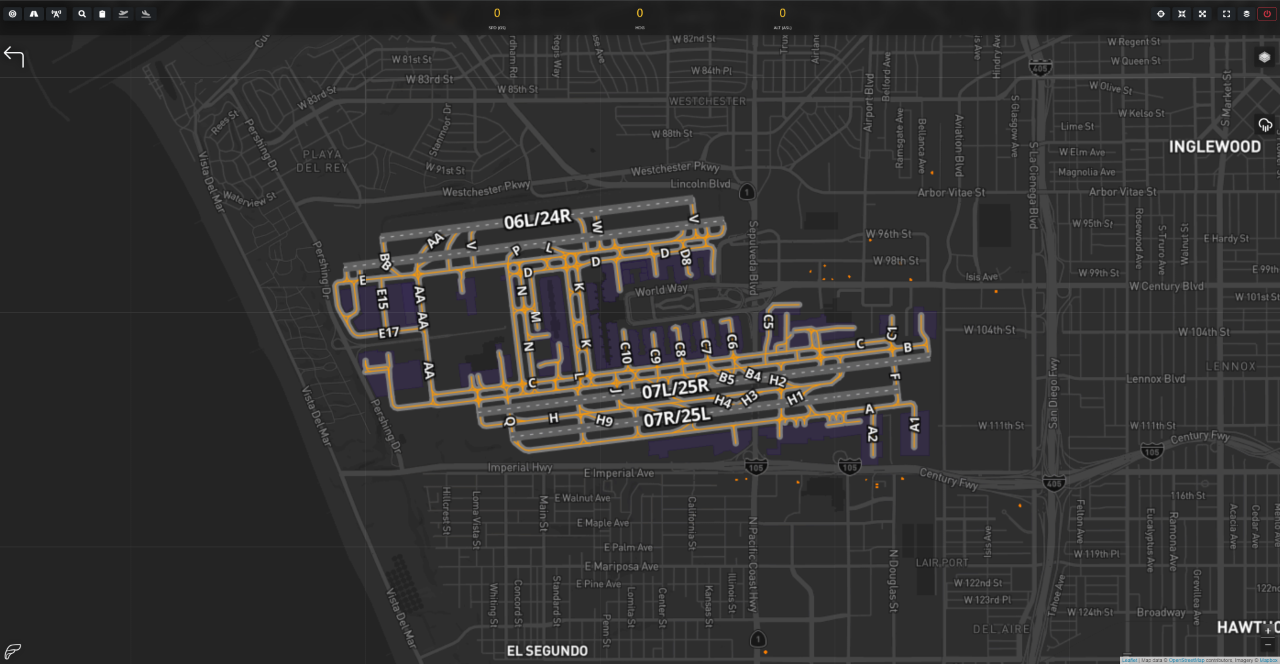¶ Pilot GPS (AeroPad)
The Pilot GPS app for AeroPad is a powerful tool you can use to track your flight on a moving map, get airport and weather information and more.
¶ Getting Started
In order to use the Pilot GPS app, you first need a free MapBox API key saved in LRM to view the map. See our quick guide on how to do this.
You will only need to do this once. If you have not set your API key correctly, the Pilot GPS app will display a message advising you to set up the API key. Refer to the above guide again and follow it carefully.
¶ Powering On the Pilot GPS
On the AeroPad home screen, click or tap on the Pilot GPS app to open it.
If you have correctly configured your MapBox API key, you should see something similar to the following:
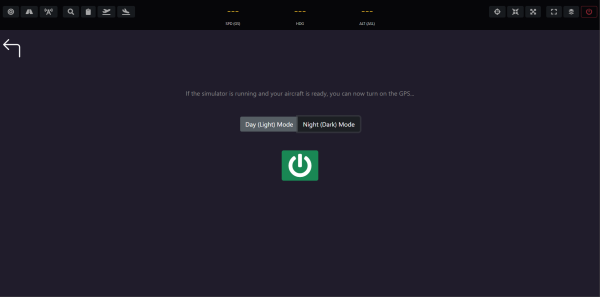
To power on the Pilot GPS, select the map theme you prefer (Day or Night mode) and then click or tap the green power button. This will display your current aircraft position on the map, as well as a few at-a-glance stats at the top of the display.
¶ Getting to Know the Pilot GPS
There are many useful features packed into the Pilot GPS app. To access them, use the toolbar at the top of the display. The various buttons are labeled here.
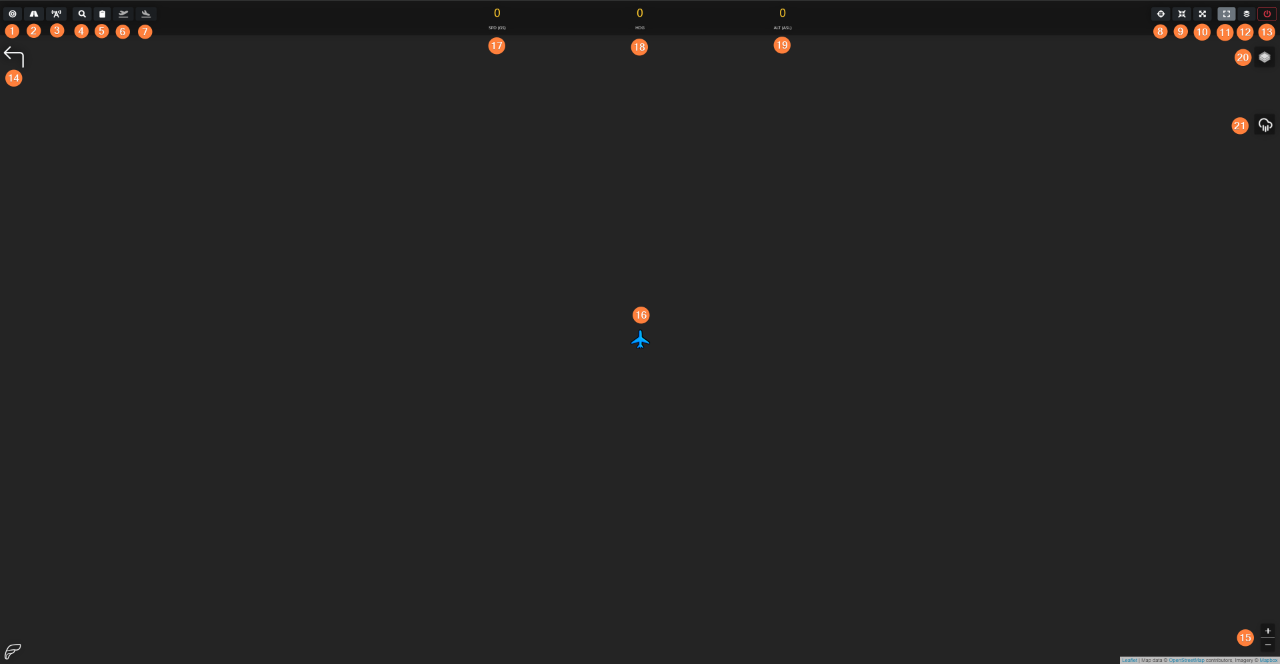
- Range Rings: Toggles the display of range rings at 20nm increments out to 100nm. The range rings are always centered on your aircraft's position.
- Nearby Airports: Toggles the display of nearby airports on the map.
- Nearby Navaids and Waypoints: Toggles the display of nearby navaids such as VORs and NDBs, as well as GPS waypoints and intersections.
- Airport Finder: Allows you to search for any ICAO code and get that airport's information, if available.
- Display Flight Plan Route: Toggles the display of your planned flight route on the map. This requires an active flight plan route set via LRM's Map > Route plan window, or via FsHub's My Flight Plan page.
- Departure Airport Information: Displays the information of your flight plan's departure airport. This requires an active flight plan route set via LRM's Map > Route plan window, or via FsHub's My Flight Plan page.
- Arrival Airport Information: Displays the information of your flight plan's arrival airport. This requires an active flight plan route set via LRM's Map > Route plan window, or via FsHub's My Flight Plan page.
- Center Aircraft: This button will center the aircraft on the map display.
- Zoom In: This button will zoom the map in to a predetermined zoom level.
- Zoom Out: This button will zoom the map out to a predetermined zoom level.
- Auto Center: Toggles the Auto Center feature. When enabled, the map will automatically pan to your aircraft's location, keeping it centered as you fly. Manually panning the map will automatically disable this feature. You may reenable it at any time.
- Smart Zoom: Toggles the Smart Zoom feature. When enabled, the map will attempt to intelligently zoom in and out based on your current aircraft speed and altitude. Manually zooming the map will automatically disable this feature. You may reenable it at any time.
- Power Off: Double-click or double-tap this button to turn off the Pilot GPS map, returning you to the initial map theme selection screen.
- Return to AeroPad Home Screen: Click or tap this to return to the AeroPad Home screen.
- Manual Zoom Controls: Zooms the map in or out. These can be used to more granularly control the zoom level of the map.
- Aircraft Position: Represents the aircraft's current position on the map. The aircraft turns based on your current heading.
- Groundspeed: Your current groundspeed in knots.
- Heading: Your current heading.
- Altitude: Your current altitude above sea level.
- Map Layer Options: Hovering your cursor over or tapping on this button will allow you to select which base map layer (Light or Dark Mode), and toggle various map overlays, including VFR and IFR charts for the US as well as world-wide OpenAIP data.
- Weather Radar Options: Clicking or tapping this button will enable the weather radar overlay and display various controls related to the radar.
¶ Airport Finder & Departure/Arrival Airport Information Overlays
The Airport Finder & Departure/Arrival Airport Information Overlay features work nearly identically. The main difference is that the departure and arrival airport information buttons use your active flight plan to provide one-click or one-tap shortcuts to those airports, whereas the Airport Finder allows you to enter an ICAO code to look up information about any airport in our database.
The information provided will appear similar to the image below.
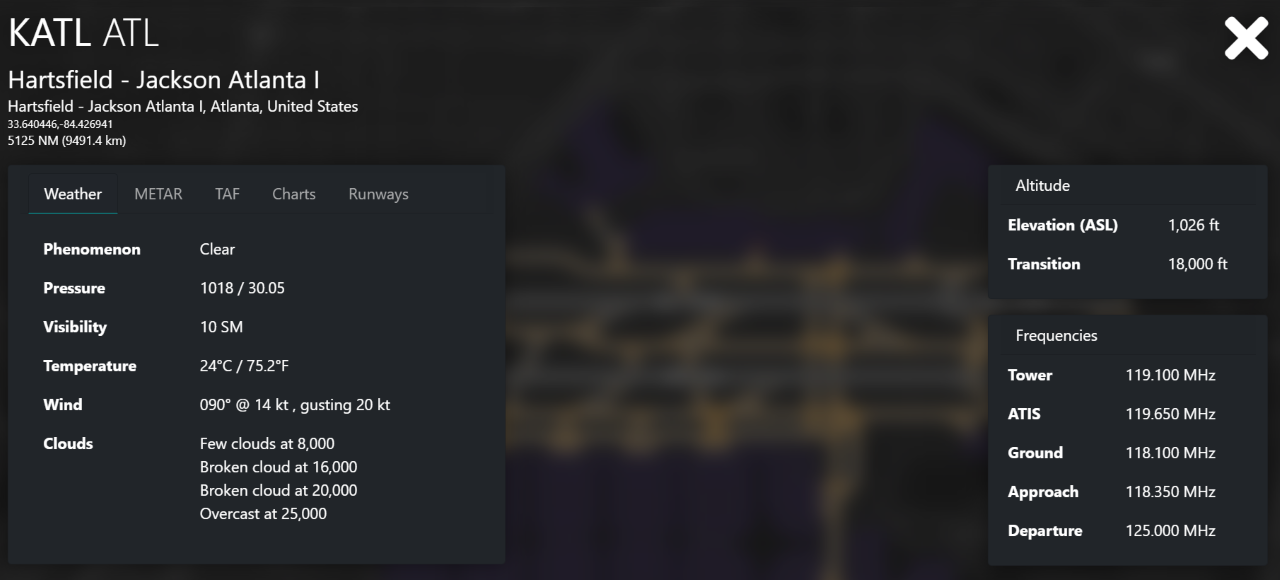
The information provided includes:
- Airport ICAO & IATA identifiers (where applicable)
- Airport name
- Airport location
- Airport coordinates
- Current aircraft distance from the selected airport in nautical miles and kilometers
- Decoded weather (where available)
- Raw textual METAR (where available)
- Raw textual TAF (where available)
- Charts (where available, and if you have them synced in LRM)
- Suggested runways based on wind direction
- Airport elevation
- Transition altitude
- Communication & weather frequencies (where applicable)
¶ Viewing Charts
Charts can be viewed inside the Pilot GPS app. To display charts, you must have added them to your Flight Bag in FsHub and synced them using LRM.
If you are unfamiliar with how to sync charts from FsHub to LRM, please see our guide on how to sync charts.
Once they're synced, you can view the charts by going to the Charts tab of the appropriate airport's information overlay and clicking or tapping on a chart name. This will open a chart viewer inside the Pilot GPS app similar to the image below.
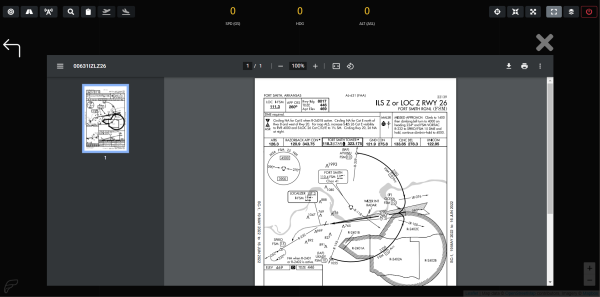
¶ Airport Layout Diagrams
Thanks to OpenStreetMap data, the Pilot GPS can also be used to display detailed airport layout information right within the map, including runways, taxiways, aprons and gate numbers! This means that you can use the Pilot GPS as a moving map while taxiing around airports. This is especially useful if you are unfamiliar with an airport, or if you've been given taxi instructions while flying online.
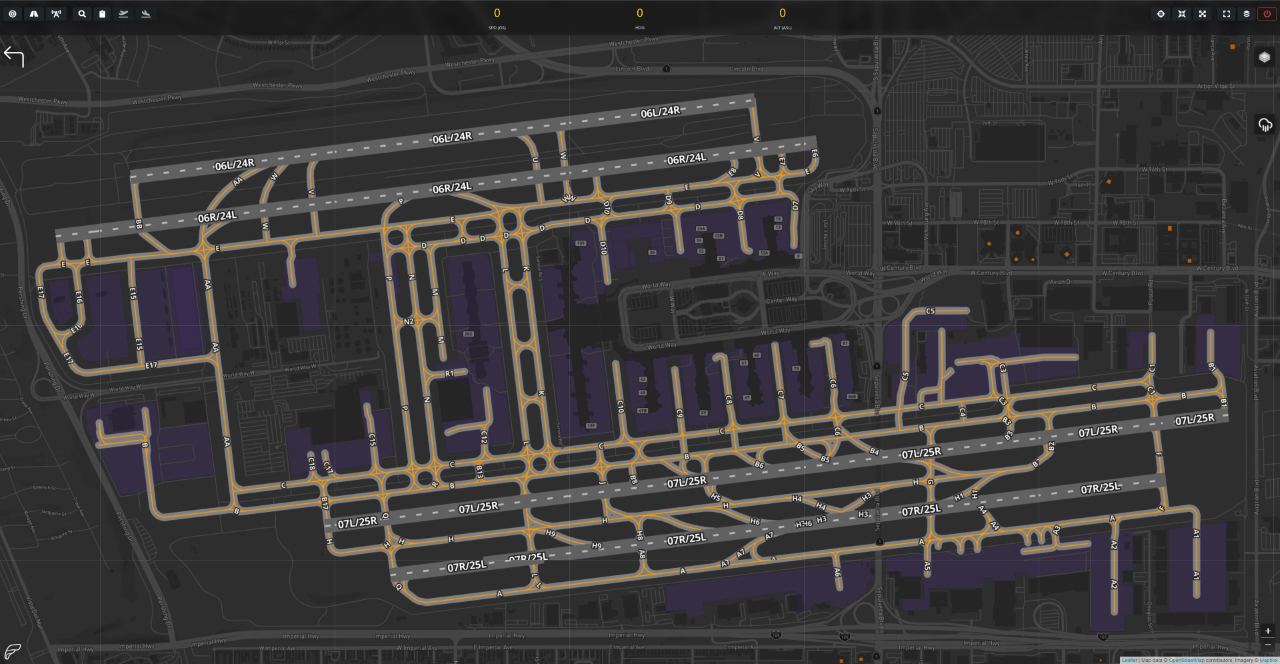
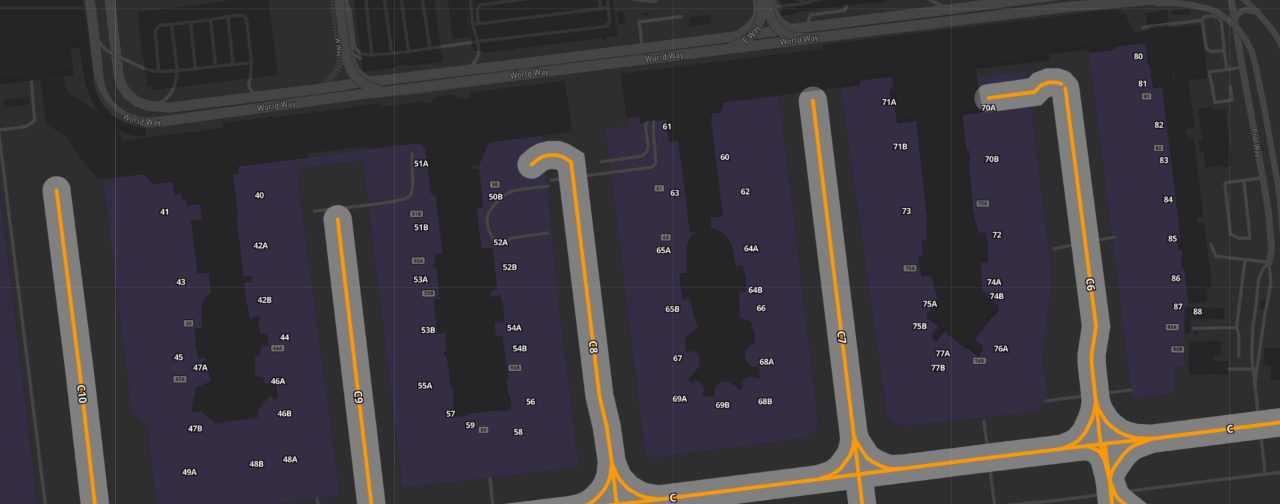
While OpenStreetMap data is quite extensive and comprehensive, not all airports feature the same level of detail as others.
Because of the open source nature of the OpenStreetMap platform, anyone is welcome to edit the map data as necessary. If you find yourself visiting some airports frequently and would like to improve the data for those airports, we recommend going to https://www.openstreetmap.org/ and making any changes as needed. More information about how to do that can be found on their website. Also note that any changes made to OSM data will NOT appear immediately. At this time, we are unsure how often MapBox updates their map tiles, so changes could take some time to appear in Pilot GPS.
¶ Map Layer Options
Pilot GPS includes a map layer control, located at the top-right corner of the map display.

Hovering your cursor over or tapping on this button will display a list of base map layers and some useful map overlays which you can toggle as you wish.
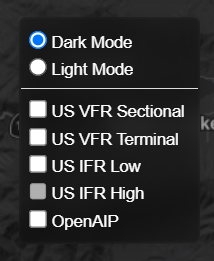
- Dark Mode: Switches to the Dark Mode base map layer. Does not affect the display of other layers.
- Light Mode: Switches to the Light Mode base map layer. Does not affect the display of other layers.
- US VFR Sectional: Toggles the VFR Sectional overlay (United States only). Only available at certain zoom levels.
- US VFR Terminal: Toggles the VFR Terminal Area Chart overlay (Large metro areas in United States only). Only available at certain zoom levels. Tip: Look for the white box outline that surrounds large metro areas on the VFR Sectional for VFR Terminal Area Chart availability!
- US IFR Low: Toggles the IFR Low Enroute Chart display (United States only). Only available at certain zoom levels.
- US IFR High: Toggles the IFR High Enroute Chart display (United States only). Only available at certain zoom levels.
- OpenAIP: Toggles the OpenAIP overlay.
¶ US VFR Sectional
VFR Sectional charts are useful for flying visually as they display terrain, obstacle heights, airspace boundaries, minimum safe altitudes in each map sector, major roads, railroads, visual reference points, and MUCH more. The FAA provides this data digitally free of charge, and updates these charts every 28 days. We provide the ability to easily view them during your flights.
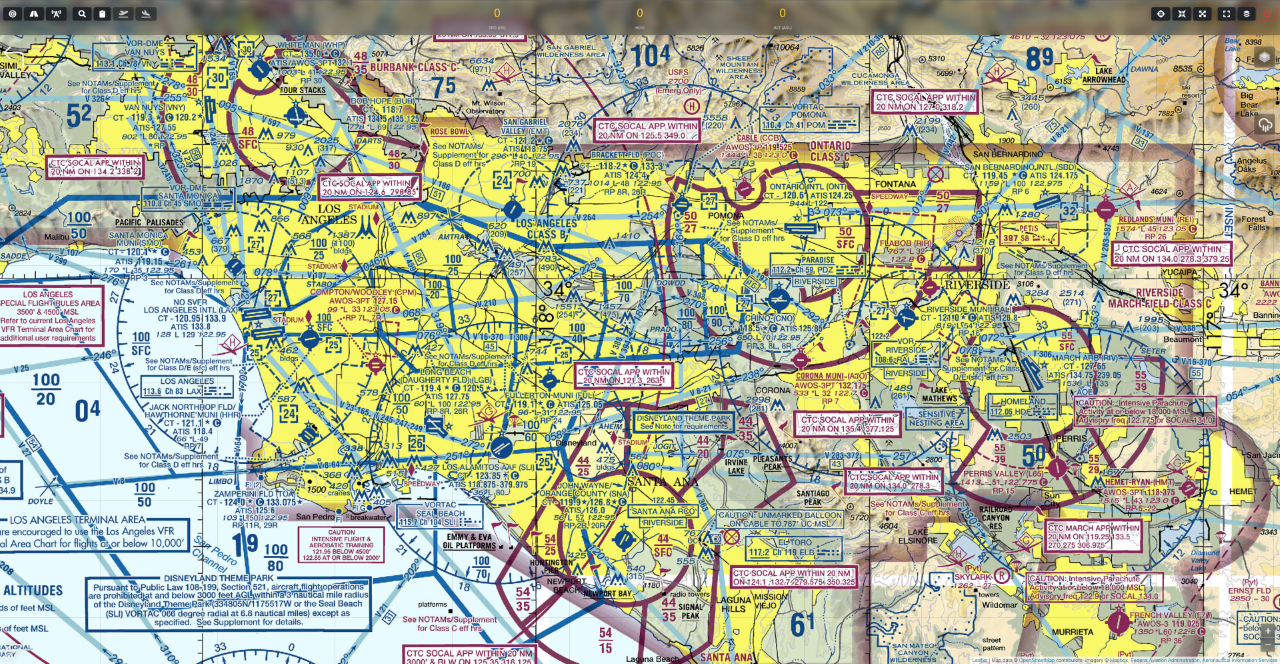
¶ US VFR Terminal Area Charts
Many major metropolitan areas around the United States also feature more detailed VFR charts called Terminal Area Charts. Much like the above VFR Sectional charts, TACs contain a bit more detail and resolution in the areas which feature TACs. Areas with TAC availability will have a white box surrounding them on the VFR Sectional.
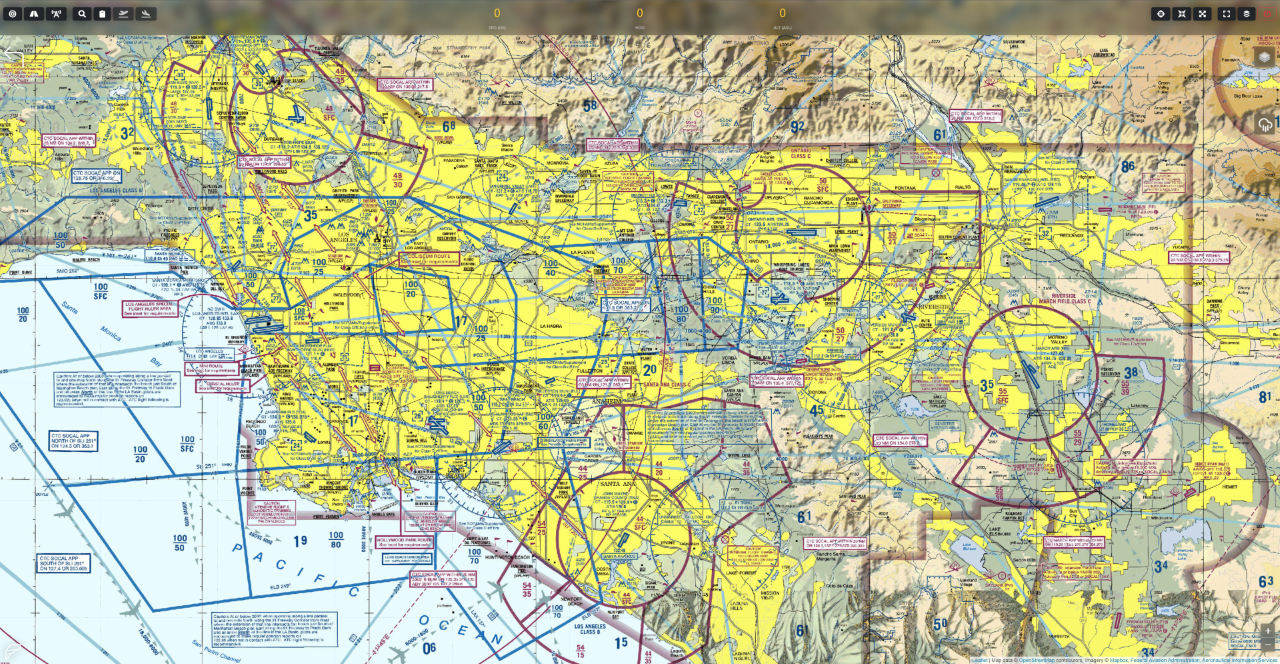
¶ US IFR Low
IFR Low Enroute charts are useful for low-altitude IFR flights. These focus on navigation using instruments rather than navigating visually. IFR Enroute charts include more detail about airways, minimum enroute altitudes, VORs, areas with high terrain, and more.
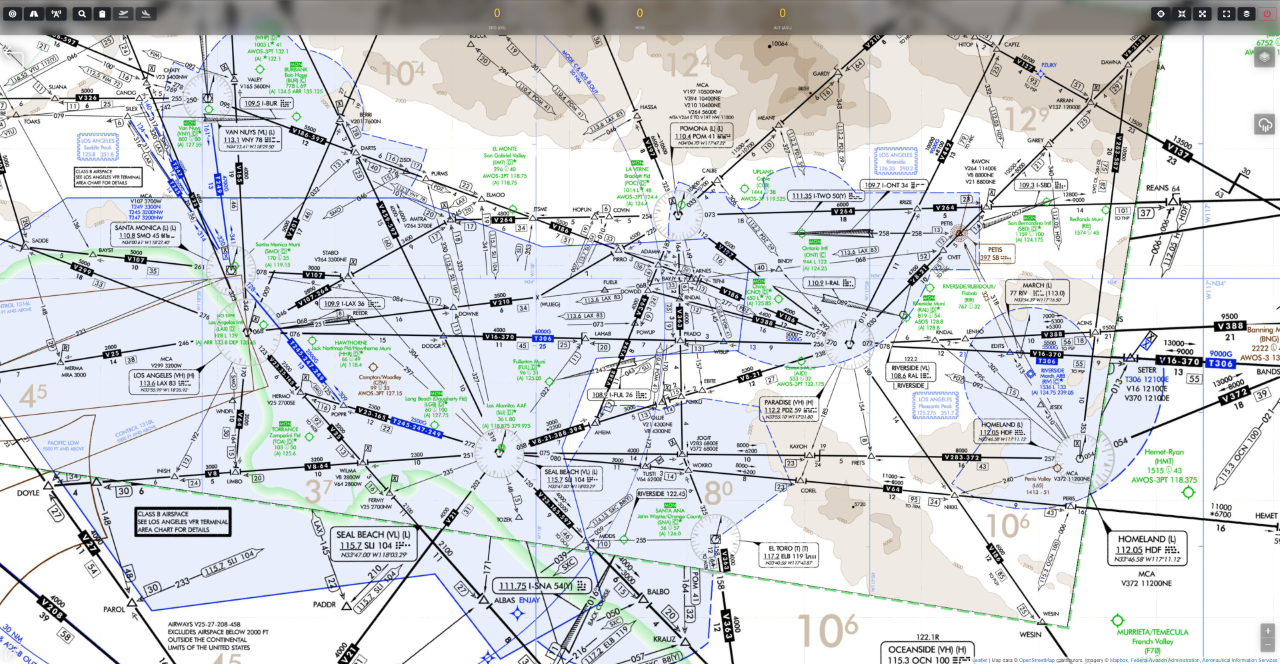
¶ US IFR High
IFR High Entroute charts are much like their Low Enroute counterparts, but focus on higher altitude flying using instruments to navigate.
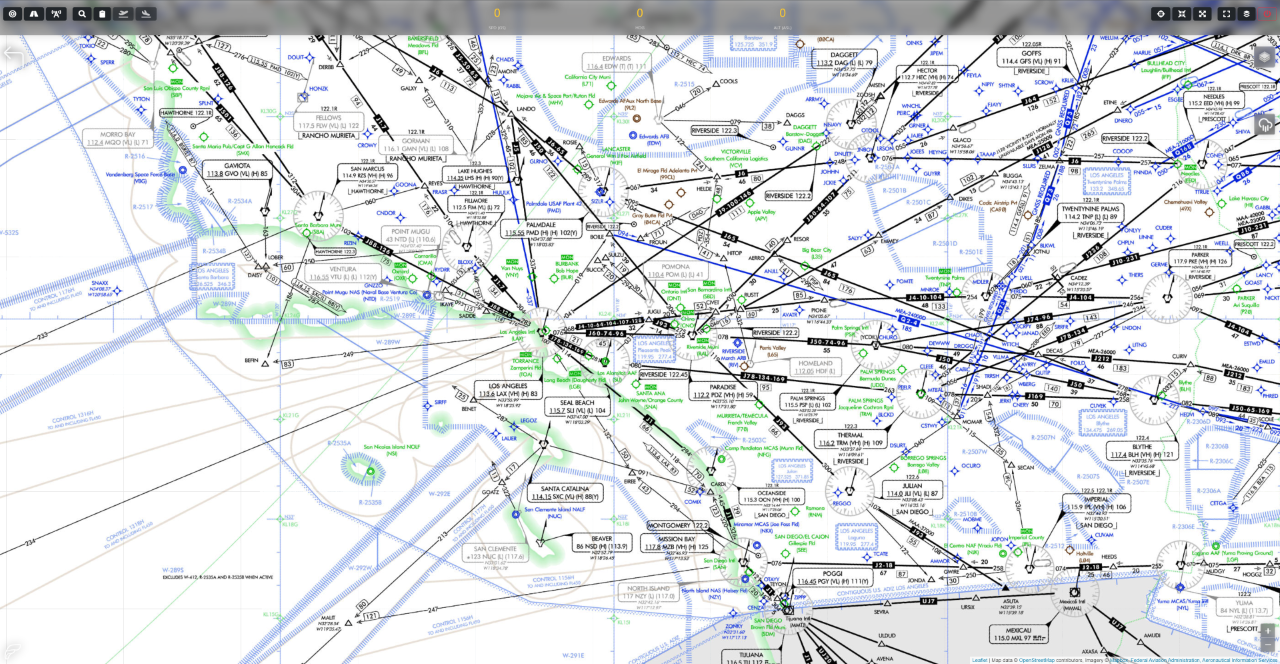
¶ OpenAIP
OpenAIP provides free and open world-wide aviation data. Such data includes airport locations, navaid information, and airspace information.
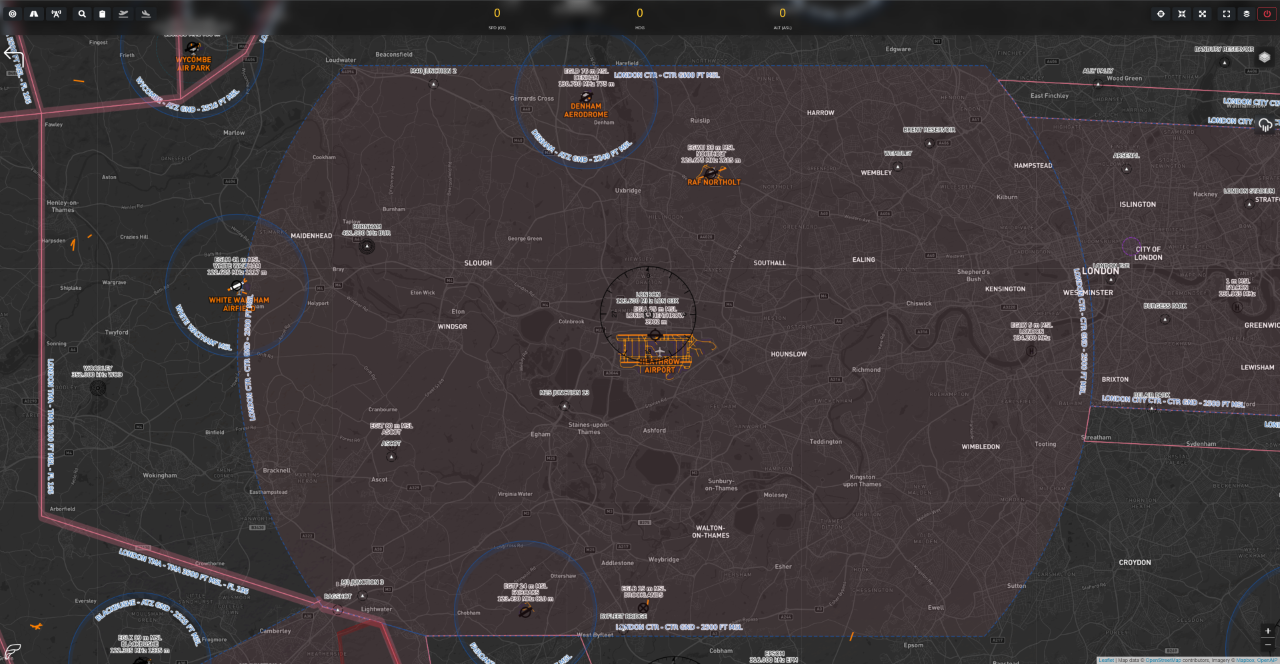
OpenAIP's data is free and open. As such, some of the information displayed may not be correct or up-to-date. If you notice any incorrect data, visit the OpenAIP website, where you can submit change requests to correct it. FsHub does not provide this data, thus we cannot change it on our end. We simply provide the ability to display OpenAIP's information.
¶ Weather Radar
We have included the ability to display a live, real-world weather radar overlay, with data courtesy of RainViewer. The radar is capable of displaying rain as well as wintry precipitation.
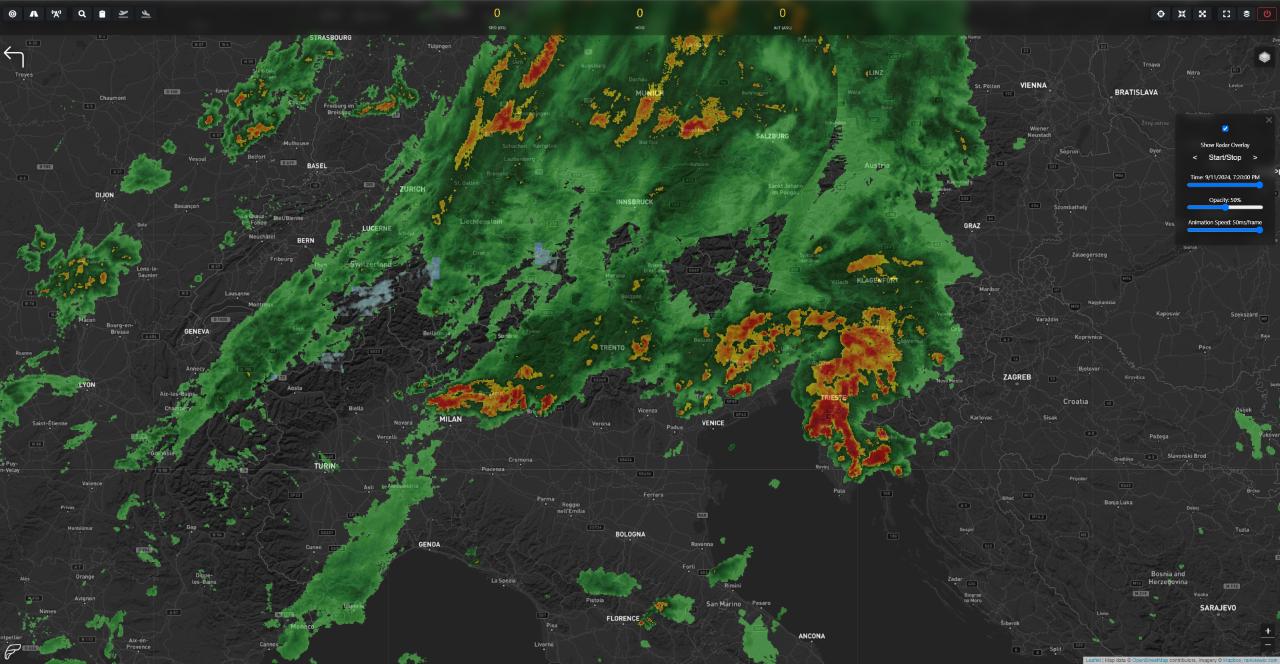
RainViewer has radar data for much of the world, but not all places have radar coverage. For more information about radar coverage, visit RainViewer's Data Sources page. This will give you a good idea of what areas are included.
To enable the weather radar overlay, simply click the Weather Radar button near the top-right of the map.

That will open a small window containing various controls for the radar.
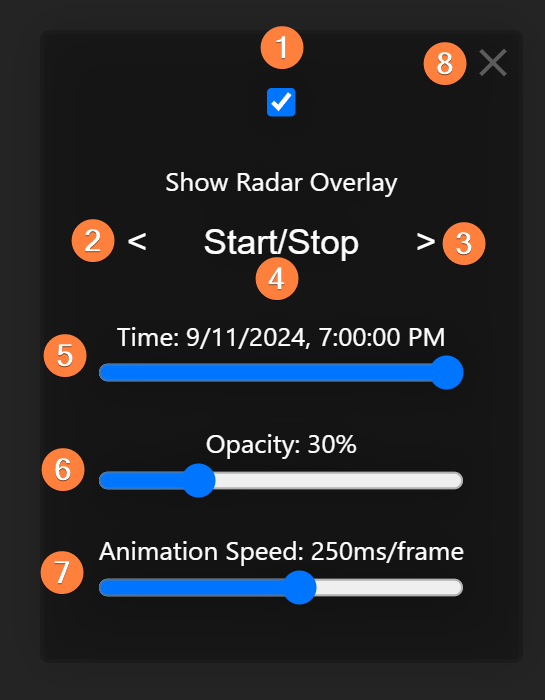
- Show Radar Overlay: Toggles the weather radar overlay.
- Previous Frame: Steps backward through the radar frames. If the oldest frame is displayed, this will loop back to the newest frame.
- Next Frame: Steps forward through the radar frames. If the newest frame is displayed, this will loop back to the oldest frame,
- Start/Stop: Toggles the radar animation.
- Time: Allows the pilot to quickly scrub through the past two hours of radar images. The label displays the currently viewed frame date and time in your local timezone.
- Opacity: Sets the opacity of the radar image. The label shows the current opacity setting.
- Animation Speed: Sets the speed of the radar animation. Moving the slider left will slow down the animation, while moving it to the right increases the speed. The label displays the current speed in milliseconds per frame (500ms/frame = 2fps, 50ms/frame = 20fps).
- Close Button: Closes the weather radar control window. Does not disable weather radar overlay. Use the Show Radar Overlay checkbox (#1 above) to disable the radar overlay.
RainViewer provides new radar images every ten minutes. While the radar is enabled, Pilot GPS will automatically look for new radar images periodically, and will update itself once a new radar image is found.
The radar overlay allows pilots to view the past two hours of radar imagery. When the radar is first loaded, only the latest radar image is shown. To view past frames, simply move the Time slider, start the animation, or use the Previous Frame or Next Frame buttons.
When starting the animation for the first time, scrolling through the past frames, or panning/zooming the map, it is normal for some radar tiles to be missing or appear to fade/blink. This happens while new radar tiles download. You can try slowing down the animation speed to give them more time to load if necessary. Sometimes zooming in or out may help if some appear to fail to download. You can also try to toggle the radar display off then back on again.
Note that the weather radar displays real-world radar imagery. It does not show what's actually happening in your simulator. You will get the most out this radar overlay if you're using live, real-world weather in your simulator. Using a weather preset instead will not affect the radar image shown in Pilot GPS.
¶ Using High-Resolution Map Tiles
By default, the Pilot GPS app uses lower-resolution tiles. As a result, map text may be easier to read for some users, but not as much data may be viewable at once on your screen.
If you prefer to use the high-resolution map tiles, go to Services > Preferences in LRM and check the box next to “Prefer high-resolution tiles” and then close the window.
You may need to refresh the Pilot GPS page or restart the Data Connector for the changes to take effect.
Using high-resolution tiles has the benefits of making the map image clearer and allowing more details to be displayed at once, but the text and map elements will appear smaller, though should still be easily readable for most users.
To help illustrate the difference, here are two screenshots of the same airport at similar zoom levels:
High-Resolution Tiles
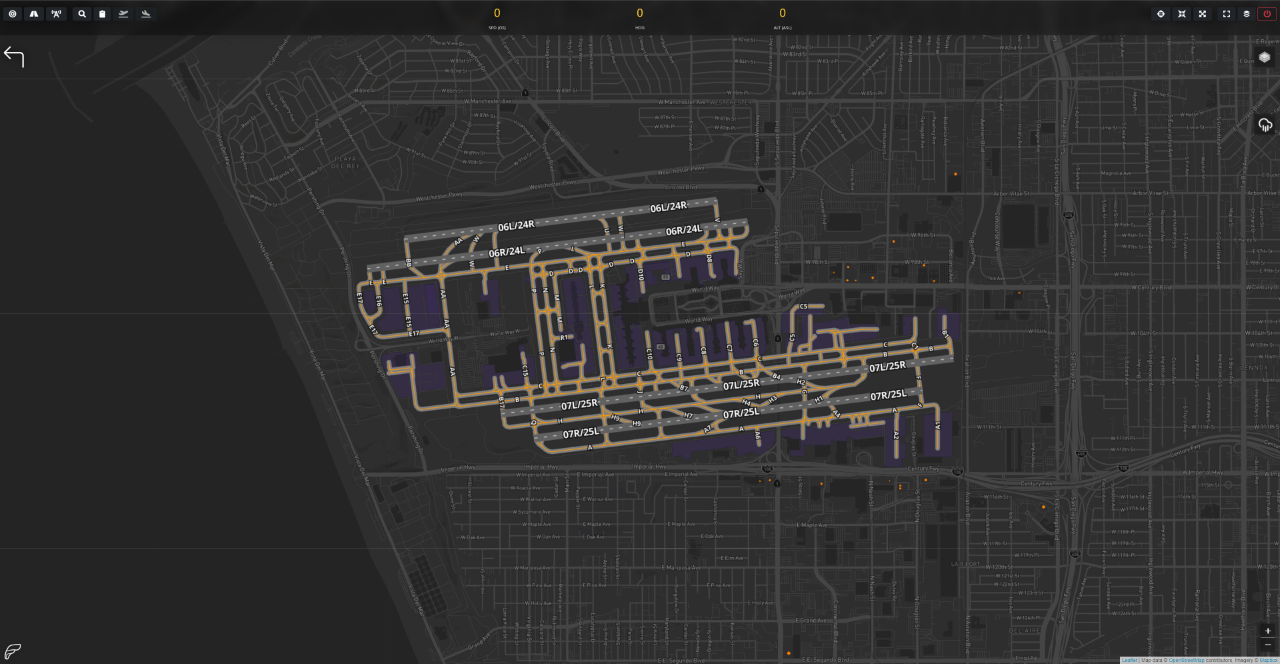
Low-Resolution Tiles
